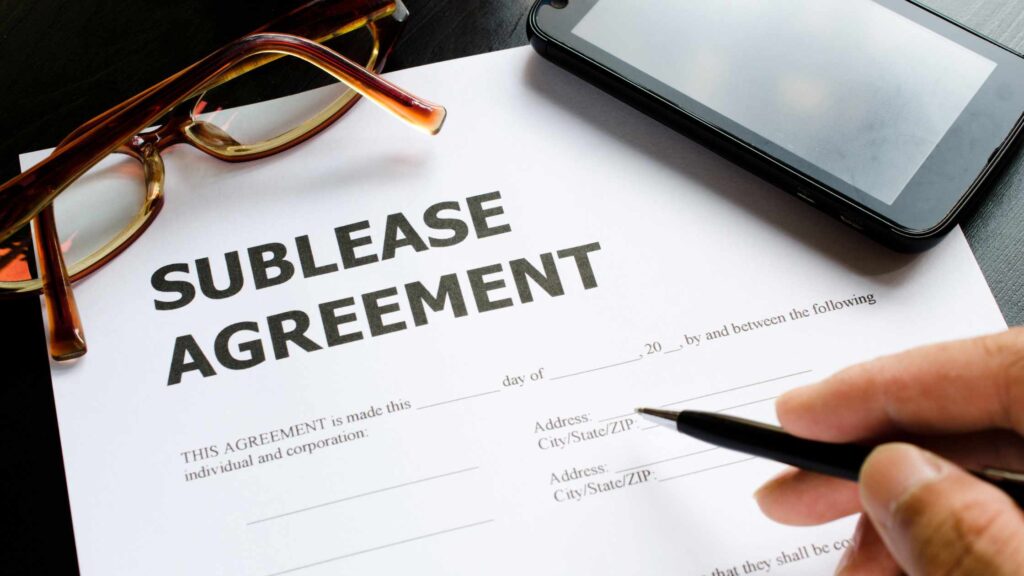Introduction
Subletting and subleasing are terms that often come up in the world of renting. Understanding these concepts is crucial for renters, as they can provide flexibility and financial relief in certain situations. In this article, we will dive deep into the world of subletting and subleasing, exploring their differences, legal implications, and the steps involved.
The Difference Between Subletting and Subleasing
Subletting
Subletting occurs when a tenant decides to rent out their rented property to another person temporarily. In this arrangement, the original tenant becomes the sublessor, and the person renting the property becomes the sublessee. The sublessee pays rent to the sublessor, who in turn continues to pay rent to the landlord or property owner.
Subleasing
On the other hand, subleasing refers to the process of renting out the entire rental unit to a sublessee for a specific period. In a subleasing arrangement, the original tenant becomes the sublessor, and the sublessee takes over the lease agreement and becomes responsible for paying rent directly to the landlord or property owner.
Legality of Subletting and Subleasing
The legality of subletting and subleasing varies depending on various factors such as location, local regulations, and the terms of the lease agreement. Some rental agreements explicitly prohibit subletting or subleasing, while others allow it with prior written consent from the landlord.
Before considering subletting or subleasing, renters must carefully review their lease agreement and seek permission from their landlord if required. Failure to do so can result in legal consequences and potential eviction.
Steps Involved in Subletting and Subleasing
Subletting Process
If subletting is allowed and the tenant decides to proceed with it, certain steps need to be followed:
- Read the lease agreement: The tenant should review the lease agreement to determine if subletting is permitted and if any specific conditions or requirements need to be met.
- Obtain landlord’s consent: If subletting is allowed, the tenant must seek written consent from the landlord. It is essential to follow the proper channels and obtain permission in writing to avoid any misunderstandings.
- Find a sublessee: The tenant needs to search for a suitable sublessee to rent the property. They can advertise the availability of the property through various channels, including online listing platforms and word-of-mouth referrals.
- Subletting agreement: The tenant and sublessee should enter into a subletting agreement that outlines the terms and conditions of the sublease, including the duration, rent amount, and any other agreed-upon terms.
- Handover and communication: The tenant should ensure a smooth handover process to the sublessee, including providing necessary instructions, keys, and contact information. Open communication channels should be maintained throughout the subletting period.
Subleasing Process
In the case of subleasing, the process involves:
- Review lease agreement: The tenant must carefully review the lease agreement to determine if subleasing is permitted and if any specific conditions or requirements need to be met.
- Seek landlord’s consent: If subleasing is allowed, the tenant should inform the landlord and seek written consent. It is crucial to follow the proper procedures and obtain permission in writing to ensure a lawful sublease.
- Advertise the rental unit: The tenant needs to advertise the rental unit through various channels to find a suitable sublessee. This may include utilizing online platforms, classified ads, social media, or contacting local real estate agents.
- Sublease agreement: The tenant and sublessee should enter into a sublease agreement that outlines the terms and conditions of the sublease, including the duration, rent amount, and any additional agreements.
- Handover: The tenant should facilitate a smooth handover process to the sublessee, which may include providing keys, instructions, and necessary documentation. It is important to document the condition of the property before the sublessee moves in to avoid potential disputes.
Conclusion
Understanding subletting and subleasing is essential for both tenants and landlords. Although they involve renting out a property to someone else, there are distinct differences in terms of duration and responsibilities. Renters should carefully review their lease agreement and seek proper consent before considering subletting or subleasing. By following the necessary steps and maintaining open communication, renters can navigate these arrangements effectively.







